The Musée d’Orsay is a museum housed in a grand railway station built in 1900. Home to many sculptures and impressionist paintings, it has become one of Paris’s most popular museums.

New Railway Stations
At the turn of the twentieth century, two large railway stations were built in Paris: the Gare de Lyon and the Gare d’Orsay. The Gare d’Orsay had the most prominent site, along the Seine opposite the Louvre. The railway station was planned by the Compagnie d’Orléans, who wanted to bring electrified trains right into the heart of Paris.
This railway station was built at the site of the Orsay Palace, built in 1810-1838 on the initiative of Napoleon I. The palace was burned down by the Communards in 1871 and eventually demolished in 1898 to make way for the new railway station. The building takes its name from the quay on which it is located, which was named after Charles Boucher d’Orsay, the magistrate who ordered the construction of the quay.
Design
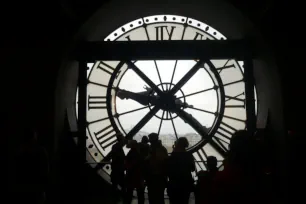
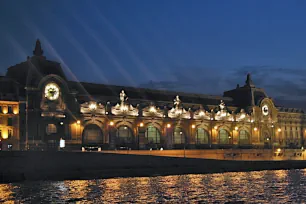
The architect first appointed was Eugène Hénard. He intended to use industrial materials on the facade facing the Louvre. Facing fierce protests from preservationists, the Compagnie d’Orléans decided to hold a competition supervised by a parliamentary commission. The winner of this contest was the Beaux-Arts architect Victor Laloux, who before had designed the railway station in Tours, France.
His design was acclaimed for the integration of the metal vault in the stone exterior. The hall measures 140 meters long, 40 meters wide and 32 meters high (459 x 132 x 105 ft.). The whole structure is 175 meters long and 75 meters wide (574 x 246 ft.). An impressive 12,000 tonnes of metal was used for the construction of the Gare d’Orsay, which is well more than the amount of metal used for the Eiffel Tower.
The Railway Station…
The Gare d’Orsay was inaugurated on the 14th of July 1900 for the Paris World Exposition and was considered a masterpiece of industrial architecture. But soon the platforms had become too short for the now much longer trains and as early as 1939, the Gare d’Orsay was out of use as a train station. Over time, it was used as a parking lot, a shooting stand, a theater location and even a reception center for prisoners of war.
…Turned into a Museum
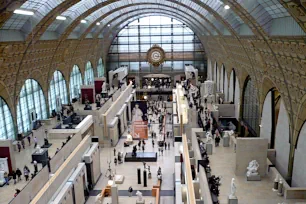
The train station had been completely abandoned since 1961 when it was saved from demolition by the French president Pompidou. In 1978 his successor, president Giscard d’Estaing, decided to use the Gare d’Orsay as a museum for nineteenth- and twentieth-century art. The idea was to create a museum for art that was too modern for the Louvre but too old for the Centre Pompidou, and it would cover all sorts of different art forms.
The transformation of the Gare d’Orsay into the Musée d’Orsay, as it is now called, was executed by ACT Architecture. This young architecture team was selected in 1978 by a competition. Work started in 1979 and finally on the first of December 1986, the museum was inaugurated by the French president, François Mitterrand, who was accompanied by his predecessor Giscard d’Estaing and the mayor of Paris, Jacques Chirac.
Collection
When it opened the museum contained some 2,300 paintings, 1,500 sculptures and 1,000 other objects. Most of these works of art came from other museums, such as the Musée du Luxembourg. Over time, the collection, which covers a period from the mid-nineteenth century up to 1914, has expanded significantly, mainly due to acquisitions and gifts.
Paintings
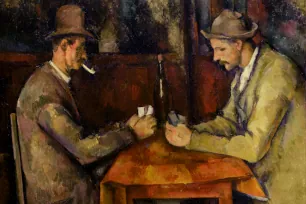
The Musée d’Orsay is best known for its amazing collection of impressionist and post-impressionist artworks. Some of the most famous post-impressionist artists represented include van Gogh, with «Starry Night Over the Rhône» and 23 other works; and Henri de Toulouse-Lautrec, with 20 works. Paul Cézanne, who formed a bridge between impressionism and post-impressionism, is also featured prominently with 45 paintings, including «The Card Players». There are 17 paintings by Seurat, famous for his pointillist works, including «The Circus». There are also works by Paul Signac – another pointillist – on display.
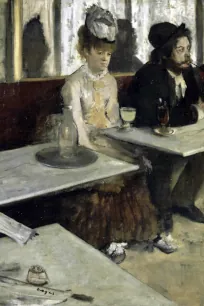
As for impressionist artists, there is an abundance of paintings to admire. The museum owns no less than 70 paintings by Claude Monet, including «La Gare Saint-Lazare» and «Houses of Parliament in London». Pierre-Auguste Renoir is not far behind with 64 paintings, including «Dance at Le Moulin de la Galette» and «Madame Georges Charpentier». The museum also owns 42 paintings by Edgar Degas, including «The Absinthe Drinker». Édouard Manet, another famous French impressionist artist, is represented with 33 paintings, including «Luncheon on the Grass».
While the museum is dominated by local artists, there are more than just French paintings on display. Aside from the aforementioned van Gogh (The Netherlands), you can see a selection of works by notable foreign artists such as John Singer Sargent (US), Edvard Munch (Norway), Gustav Klimt (Austria), and James Ensor (Belgium).
Not all paintings are (post-)impressionist. One not-to-miss painting in a more classical style is «The Romans in their Decadence» by Thomas Couture.
Sculptures
The museum also owns an impressive collection of sculptures from the second half of the nineteenth century. Naturally, France’s favorite son Auguste Rodin is omnipresent with works like the «Gates of Hell». If you want to see even more of this work, you can also visit the Musée Rodin, a mere 15-minute walk south towards Les Invalides. Another artist in the Musée d’Orsay who has his own dedicated museum in Paris is Antoine Bourdelle, a student of Rodin. One of his most famous sculptures on display is «Hercules the Archer».
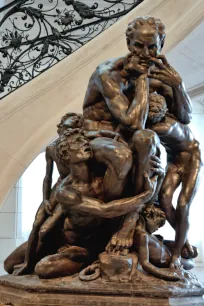
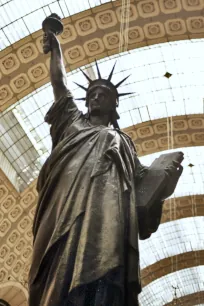
Another important French sculptor is Jean-Baptiste Carpeaux. Don’t miss his «Ugolin» – inspired by the Divine Comedy by Dante, and the sculpture group «The Dance», which Carpeaux made in 1869 to decorate the facade of the Garnier Opera. At the time, it was widely criticized as obscene. There’s another not-to-miss sculpture group by Carpeau in the museum: «The Four Parts of the World Supporting the Celestial Sphere». It was made in 1873 to decorate the spectacular fountain at the end of the Observatory gardens near the Luxembourg garden.
You might be surprised to know that many of the artists famous for their paintings also made sculptures. Some of the sculptures you find in the Musée d’Orsay were made by such artists, including Edgard Degas, Paul Gauguin, and Auguste Renoir.
The most recognizable statue in the Musée d’Orsay is «Liberty» by Frédéric Auguste Bartholdi, who made it as a study for the Statue of Liberty. The statue was originally located in the Luxembourg garden, but was moved here to protect it from the elements. Another must-see work is «The Panther» by the Italian sculptor Rembrandt Bugatti, brother of the founder of the Bugatti car company.
Decorative Art
The Musée d’Orsay also features a collection of decorative arts. In fact, the original idea for the museum was to become a museum dedicated to decorative arts. However, it was deemed that the collection, which came from the former Musée du Luxembourg in the Luxembourg garden, was too small to fill such a large museum, so the museum was expanded with a collection of paintings and sculptures it is now famous for.
Since its opening in 1986 the collection of decorative pieces has grown significantly. Most of the collection consists of individual pieces from the second half of the nineteenth century, but the main highlight is the complete dining room of Adrien Bénard, a realization by the Art Nouveau sculptor and designer Alexandre Charpentier from 1900-1901.
- Next: Panthéon
- More Paris Museums
- More Sights & Attractions in Paris

